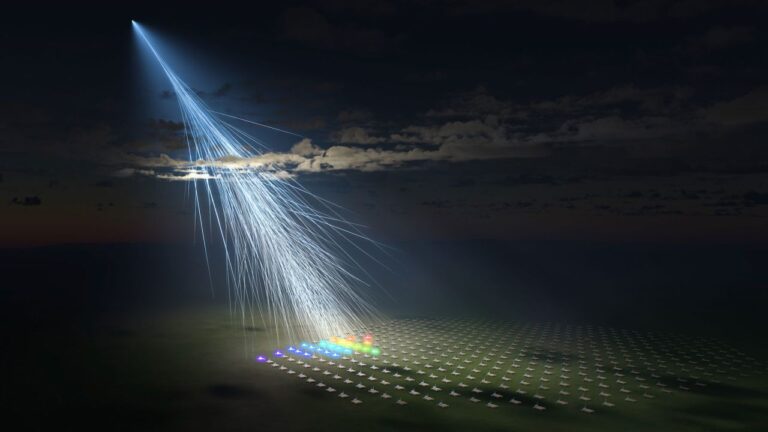Worldsfeed News Desk: Scientists are delving into a new cosmic mystery following the detection of the most potent cosmic ray in over three decades by a telescope in Utah. Recent research, published in the journal Science, unveils the presence of an exceedingly rare ultra-high-energy particle that appears to have journeyed to Earth from beyond the Milky Way galaxy. Dubbed the Amaterasu particle, after the Japanese sun goddess, the origin of this energetic cosmic entity remains enigmatic, with some experts speculating it may be linked to unknown physics.
The discovery, characterized as “amazing” in an article in the scientific journal Nature, has left researchers contemplating the unprecedented energy levels exhibited by the Amaterasu particle. Clancy James, an astronomer at Curtin University in Perth, Australia, expressed bewilderment at the phenomenon, emphasizing that cosmic rays, typically invisible to the naked eye, are charged particles—often protons—that traverse space from distant galaxies and extragalactic sources at nearly the speed of light.
Cosmic rays with energies exceeding 100 exa-electron volts (EeV) are rarely detected, and the recent finding, made at the Telescope Array in Millard County, Utah, on May 27, 2021, revealed a cosmic ray with an estimated energy of 240 EeV. Toshihiro Fujii, an astronomer at Osaka Metropolitan University in Japan, made the discovery during a routine data check, noting signals consistent with ultra-cosmic rays.
The Oh-My-God particle, the most powerful cosmic ray detected over 30 years ago, measured around 320 EeV and raised questions about its origin. The recent Amaterasu particle, with its baffling energy level, adds another layer of mystery. Scientists, including John Matthews and John Belz from the University of Utah, find themselves puzzled, unable to trace the trajectory of these high-energy particles to a definitive source.
Despite years of research, the exact origins of ultrahigh-energy cosmic rays remain elusive. The trajectories of particles like the Oh-My-God and Amaterasu point to sources with insufficient energy to produce them, leaving scientists grappling with the question, “What the heck is going on?” The uncertainty has led to speculation about unconventional explanations, such as defects in spacetime structure or colliding cosmic strings.
To unravel this cosmic enigma, Fujii and his team are enhancing the sensitivity of the Telescope Array fourfold, aiming to capture more of these rare ultrahigh-energy cosmic rays and gain precise insights into their origins. As the scientific community awaits further discoveries, the mysteries of these powerful cosmic phenomena continue to deepen.


0 Comments